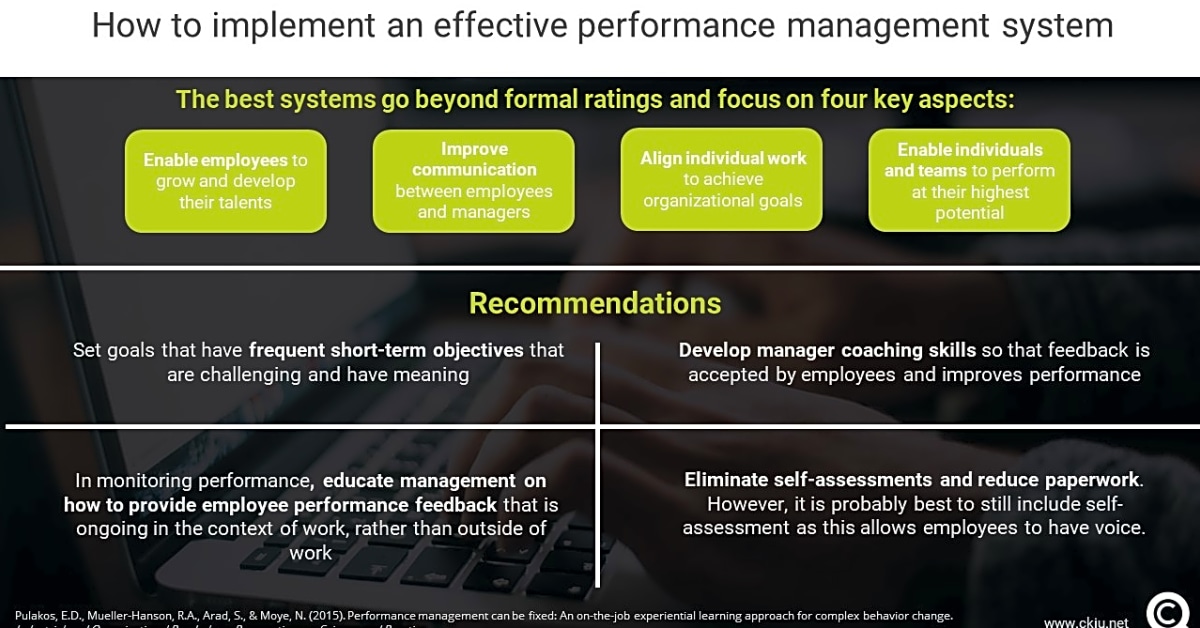Setting goals and objectives for employees is an essential part of effective management. As a manager, it is your responsibility to ensure that your team is working towards a common goal and achieving measurable results. In today’s competitive business world, setting clear and achievable goals for your employees is crucial for the success of your organization. It not only helps in improving overall performance but also provides direction and motivation to your employees. In this article, we will discuss various strategies and techniques that can help you set effective goals and objectives for your employees. Whether you are a new manager or looking to improve your management skills, this article is a must-read for you. So, let’s dive in and learn how to effectively set goals and objectives for your employees to drive performance and achieve success in your organization.
Firstly, it is important to understand the difference between goals and objectives. Goals are broad, long-term aspirations that define the overall direction of the organization, while objectives are specific, measurable targets that contribute towards achieving those goals. When setting goals and objectives for employees, it is crucial to ensure that they are SMART – Specific, Measurable, Achievable, Relevant, and Time-bound. For example, instead of setting a goal to increase sales, a SMART objective would be to increase sales by 10% in the next quarter.
Another important aspect of setting goals and objectives is involving employees in the process. This not only increases their commitment towards achieving them, but also provides valuable insights and perspectives. Additionally, it is important to regularly review and update goals and objectives as the business landscape changes.
In terms of operational leadership, setting goals and objectives can help to foster a culture of accountability and drive performance. By clearly defining expectations and providing regular feedback, employees are motivated to perform at their best. This also ties into team building, as setting goals and objectives that require collaboration and communication can help to strengthen teamwork.
Problem solving and decision making also play a key role in setting goals and objectives. By identifying potential obstacles and creating contingency plans, leaders can ensure that goals and objectives are achievable and realistic. Additionally, effective problem solving and decision making can help to overcome challenges and keep the team on track towards achieving their goals.
Process improvement is another important aspect of setting goals and objectives for employees. By analyzing current processes and identifying areas for improvement, leaders can set objectives that aim to streamline operations and increase efficiency. This not only benefits the organization as a whole, but also empowers employees to find new ways to improve their work.
Finally, becoming a better leader in business operations involves continuously learning and growing. By setting goals and objectives for personal development and growth, leaders can improve their skills and knowledge, which in turn benefits the entire team. This can include attending workshops or conferences, networking with other leaders, or seeking mentorship opportunities.
Some may argue that setting too many goals and objectives can be overwhelming for employees and may lead to burnout. However, by following the SMART framework and involving employees in the process, leaders can ensure that goals and objectives are realistic and achievable.
Overall, setting clear goals and objectives for employees is crucial for effective management and improving organizational performance. By understanding the difference between the two, involving employees in the process, regularly reviewing and updating them, fostering a culture of accountability, problem solving and decision making, process improvement, and continuous personal growth, leaders can become better managers and drive their teams towards success.
The Role of Problem Solving and Decision Making
Another important aspect of setting goals and objectives for employees is the role of problem solving and decision making. As a leader, it is crucial to anticipate potential obstacles that may arise and create contingency plans to overcome them. This not only helps to minimize the impact of challenges on the team, but also shows your commitment to finding solutions and achieving goals.
Effective problem solving and decision making involve analyzing the situation, identifying possible solutions, and evaluating the best course of action. It is important to involve your team in this process, as their insights and perspectives can provide valuable input.
Additionally, as a leader, it is essential to remain calm and focused when facing challenges. This will help you make sound decisions and guide your team towards successful problem resolution.
Process Improvement for Increased Efficiency
One of the key components of effective goal setting and objective management is the continuous improvement of processes within the organization. By analyzing current processes, identifying areas for improvement, and empowering employees to find new solutions, businesses can achieve increased efficiency and ultimately improve their overall performance.
Continuous process improvement involves regularly evaluating and refining existing processes to make them more streamlined and effective. This can include identifying bottlenecks or inefficiencies in workflows, eliminating unnecessary steps, and implementing new technologies or tools to automate tasks.
Empowering employees to take an active role in process improvement is also crucial for success. By involving them in the analysis and decision-making process, employees feel more invested in the success of the organization and are more likely to come up with innovative solutions.
Leaders can encourage employee involvement in process improvement by providing training and resources, as well as creating a culture that values continuous learning and improvement. By involving employees in setting goals and objectives related to process improvement, they will feel a sense of ownership and motivation to help the organization achieve its goals.
The Impact on Operational Leadership
Setting clear and measurable goals and objectives for employees not only helps to align everyone towards a common purpose, but also plays a crucial role in fostering a culture of accountability within an organization. As a leader, it is your responsibility to drive performance and ensure that your team is working towards achieving the set goals and objectives.
By setting goals and objectives, you are providing a roadmap for success and giving your team a sense of direction. This not only motivates them to work towards a common goal, but also strengthens teamwork and collaboration. When everyone is working towards the same objectives, it creates a sense of unity and encourages employees to support each other in achieving their individual and collective goals.
Fostering a culture of accountability is essential for effective operational leadership. When employees have clear goals and objectives, they know what is expected of them and can take ownership of their work. This leads to a more efficient and productive workforce, as employees are motivated to perform at their best and hold themselves accountable for their actions.
Moreover, setting goals and objectives also helps in driving performance within an organization. When employees have specific targets to meet, it pushes them to work harder and strive for excellence. This not only benefits individual employees, but also contributes to the overall success of the organization.
Personal Development for Better Leadership
In order to effectively manage a team and improve organizational performance, it is essential to continuously learn and grow as a leader. This can be achieved through various methods such as attending workshops, networking with other professionals, and seeking mentorship opportunities.
By continuously expanding your knowledge and skills, you are able to bring new ideas and perspectives to the table, which can greatly benefit your team and organization. Additionally, staying updated on industry trends and best practices can help you make more informed decisions when setting goals and objectives for your employees.
Attending workshops and conferences allows you to learn from experts in your field and gain valuable insights into effective management techniques. Networking with other professionals also provides an opportunity to exchange ideas, collaborate, and learn from each other’s experiences.
Mentorship is another valuable tool for personal development as a leader. Having a mentor who has experience in managing teams can provide guidance and support in setting goals and objectives that align with the company’s vision and values. They can also offer valuable advice on how to handle challenges and improve your leadership skills.
In conclusion, continuous personal development is crucial for becoming a better leader in your business operations. By utilizing workshops, networking, and mentorship opportunities, you can continuously learn and grow as a leader, ultimately leading to more effective goal-setting and improved organizational performance.
Setting SMART Goals and Objectives
Setting goals and objectives for employees is a critical aspect of effective management. However, it is not enough to simply set goals and expect them to be achieved. In order to truly drive performance and success, it is important to set SMART goals and objectives.
Understanding the Difference between Goals and Objectives
Before diving into the specifics of setting SMART goals and objectives, it is important to understand the difference between the two terms. While often used interchangeably, goals and objectives are actually distinct concepts.
A goal is a broad statement of what an organization or team aims to achieve. It provides direction and sets the overall vision for the team.
An objective is a specific, measurable, achievable, relevant, and time-bound (SMART) target that supports the overall goal. It breaks down the larger goal into smaller, actionable steps.
By understanding this distinction, managers can ensure that their team is working towards both a common purpose and specific targets.
Involving Employees in the Goal-Setting Process
While managers may be responsible for setting goals and objectives, it is important to involve employees in the process. This not only helps to create buy-in and ownership among team members, but also allows for their unique perspectives and insights to be considered.
Employees can provide valuable input on what they believe are realistic and achievable targets, as well as any potential roadblocks or challenges that may arise. By involving them in the goal-setting process, managers can also foster a sense of teamwork and collaboration.
Regularly Reviewing Goals and Objectives
Setting goals and objectives should not be a one-time event. In order for them to be effective, they need to be regularly reviewed and adjusted as needed. This allows for any changes in the business environment or team dynamics to be taken into account.
Regular reviews also provide an opportunity to track progress towards goals and make any necessary course corrections. By keeping employees updated on their progress, managers can also keep them motivated and engaged in achieving the goals.
By following these strategies and techniques for setting SMART goals and objectives, managers can effectively lead their teams towards success and drive overall organizational performance.
In conclusion, setting goals and objectives for employees is essential for effective management and team building. By following the strategies and techniques discussed in this article, leaders can improve organizational efficiency and performance, while also becoming better leaders in their business operations. Remember to regularly review and update goals and objectives to ensure they align with the overall direction of the organization and involve employees in the process for maximum commitment and success.







